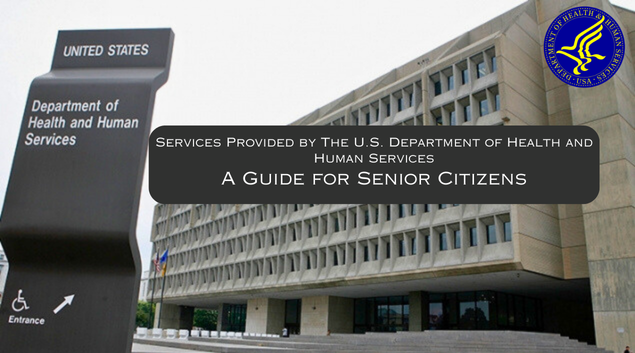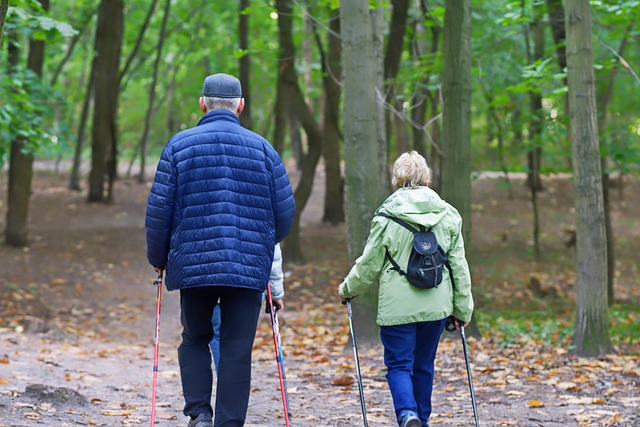- (248)952-8187
- info@findcarez.com
- 8519 PERRY RD.,# 233 ATLAS, MI 48411
Services Provided by the U.S. Department of Health and Human Services (HHS): A Guide for Senior Citizens

Services Provided by the U.S. Department of Health and Human Services (HHS): A Guide for Senior Citizens
The U.S.
Department of Health and Human Services (HHS) offers a broad range of
services to improve the well-being of American citizens, especially seniors.
From health insurance coverage to public health programs, social services, and
medical research, HHS provides a lifeline to millions of older adults. In this
article, we’ll explore the services available to seniors, how these services
have been accessed over the past five years, and what's expected in the coming
years to further improve the quality of life for elderly Americans.
Key
Services Provided by HHS to Senior Citizens
- Health Insurance and Coverage
- Medicare: Health insurance for those
aged 65 and older, as well as certain younger individuals with
disabilities. It covers hospital visits (Part A), outpatient services
(Part B), and prescription drugs (Part D).
- Medicaid: A joint federal and state
program that assists low-income individuals with medical expenses,
including long-term care.
- Health Insurance Marketplace: Seniors under 65 who do not
qualify for Medicare can access health insurance plans through the
Affordable Care Act (ACA) Marketplace.
- Public Health Programs
- Centers for Disease Control
and Prevention (CDC):
Offers resources on diseases that disproportionately affect seniors, like
pneumonia and influenza, and vaccination programs.
- National Institutes of Health
(NIH): Funds
research to understand aging better and to find treatments for
age-related diseases like Alzheimer’s and heart disease.
- Health Resources and Services
Administration (HRSA):
Provides support for underserved areas, ensuring seniors have access to
healthcare in rural or low-income regions.
- Social Services
- Administration on Aging (AoA): Offers programs like Meals
on Wheels, caregiver support, and health-related services
specifically for older adults.
- Low Income Energy Assistance
Program (LIHEAP):
Helps seniors with limited income pay for heating and cooling costs,
which is vital for elderly individuals living in colder climates.
- Temporary Assistance for
Needy Families (TANF):
While primarily aimed at families, this program may assist elderly people
who are caregivers or living with grandchildren.
- Medical Research and
Innovation
- National Institute on Aging
(NIA): Funds
cutting-edge research on aging, Alzheimer’s disease, and chronic
conditions that often affect seniors. This has led to advancements in
treatments and care for older adults.
- Biomedical Advanced Research
and Development Authority (BARDA): Supports the development of treatments for
public health emergencies that can disproportionately affect seniors,
such as the COVID-19 pandemic.
- Health and Wellness Support
- Office of Women’s Health: Targets health issues that
predominantly affect senior women, including menopause management,
osteoporosis, and breast cancer.
- Office of Minority Health: Works to improve health
outcomes for elderly individuals from minority populations who may face
greater health disparities.
- Healthcare Provider Support
- Centers for Medicare &
Medicaid Services (CMS):
Manages Medicare, Medicaid, and the Children's Health Insurance Program
(CHIP), ensuring that seniors have affordable health coverage.
- Indian Health Service (IHS): Provides healthcare
services to American Indian and Alaska Native seniors.
- Emergency Preparedness and
Response
- Office of the Assistant
Secretary for Preparedness and Response (ASPR): During emergencies like
pandemics or natural disasters, ASPR coordinates responses that directly
benefit seniors, especially those with chronic conditions.
How
Seniors Have Benefitted from HHS Services Over the Last Five Years
Over the
last five years, the number of senior citizens utilizing HHS services has
steadily increased, driven by an aging population and growing awareness of
available programs. Below is a summary of how elderly people have accessed some
of these services.
Health
Insurance Coverage
- Medicare: Over 60 million people were
enrolled in Medicare by 2023. The number of beneficiaries has been
steadily rising as baby boomers age.
- Medicaid: Approximately 8 million
seniors are currently enrolled in Medicaid for long-term care assistance,
with a steady increase as more people require assistance with
aging-related conditions.
Public
Health Programs and Research
- CDC: Between 2018 and 2023, CDC
vaccination programs for older adults increased by 12%, with a focus on
flu and pneumonia vaccines.
- National Institutes of Health: NIH has invested over $3
billion in research for aging and age-related diseases, including
Alzheimer's and heart disease, in the past five years.
Social
Services
- Administration on Aging (AoA): The Meals on Wheels
program served over 2 million seniors annually, with an increase in demand
during the COVID-19 pandemic.
- Low Income Energy Assistance
Program (LIHEAP):
LIHEAP assisted over 1.5 million elderly Americans in 2022 with heating
and cooling costs.
How
These Services Are Projected to Evolve in the Coming Years
The aging
population in the United States is rapidly increasing, and it’s projected that
by 2030, 1 in 5 Americans will be over the age of 65. This trend will
necessitate an expansion of services provided by HHS. Below are some
projections for the future:
Medicare
and Medicaid Enrollment:
By 2030,
the number of seniors enrolled in Medicare is expected to exceed 80 million, as
more Baby Boomers reach retirement age. Medicaid’s role in providing long-term
care will continue to grow, with a focus on home and community-based services.
Public
Health and Wellness:
With aging
comes increased vulnerability to diseases like Alzheimer's and heart disease.
The NIH anticipates funding an additional $1 billion in research for aging and
Alzheimer’s in the next five years, with hopes of discovering effective
treatments and cures.
Social
Services:
With the
senior population growing, the Meals on Wheels program is projected to
expand by 20% over the next decade, while caregiver support services will
receive additional funding and attention as more seniors age in place.
Emergency
Preparedness:
Given the
rise in natural disasters and pandemics, the Office of the Assistant
Secretary for Preparedness and Response (ASPR) is expected to increase its
efforts in planning for senior citizens' health, particularly those in
long-term care facilities.
Accessing
Services: A Guide for Senior Citizens
For senior
citizens looking to take advantage of these services, here are some tips on how
to get started:
- Medicare: Seniors can apply for
Medicare through the Social Security Administration. Visit medicare.gov to learn
more about coverage options and enrollment periods.
- Medicaid: Medicaid eligibility varies
by state, so seniors should visit their state’s Medicaid website or use Medicaid.gov
to apply or get more information.
- Administration on Aging
Services: To
access programs like Meals on Wheels, caregiver support, and
others, seniors should visit the Administration on Aging’s website
or contact their local Area Agency on Aging (AAA).
- Emergency Assistance: Seniors can call the Eldercare
Locator at 1-800-677-1116 for help with locating services in their
area, particularly during emergencies.
- NIH and Research: For seniors interested in
participating in research studies, the NIH offers a clinical trials
registry where seniors can find opportunities to contribute to
advancements in aging-related research.
Conclusion
The U.S.
Department of Health and Human Services provides vital services for senior
citizens, helping them maintain a healthy, active lifestyle as they age. With
the aging population continuing to grow, HHS services will only become more
crucial, ensuring that older adults have the support they need to live
independently and with dignity. Whether it’s health insurance, caregiving
assistance, or emergency preparedness, there are numerous resources available,
and seniors are encouraged to take advantage of these offerings to enhance
their quality of life.



